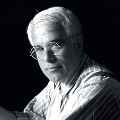
Peter Eisenman (1932 – Present)
Peter Eisenman headed an informal group of five New York architects who wanted to establish a rigorous theory of architecture independent of context. Called the New York Five, they were featured in a controversial 1967 exhibit at the Museum of Modern Art and in a later book titled Five Architects. In addition to Peter Eisenman, the New York Five included Charles Gwathmey, Michael Graves, John Hejduk, and Richard Meier
Until recently, Peter Eisenman was known mainly as a teacher and a theorist. His first major public building was Ohio’s Wexner Center for the Arts, designed with architect Richard Trott. Made up of complex grids and a collision of textures, the Wexler Center is a hallmark of Deconstructivist design.
Since then, Peter Eisenman has stirred controversy with buildings that appear disconnected from surrounding structures and historical context. Often called a Deconstructionist, Eisenman’s writings and designs represent an effort to liberate form from meaning. Yet, while eschewing external references, Peter Eisenman’s buildings may be called Structuralist in that they search for relationships within the building elements.
Prominent Buildings:
1989: Wexner Center for the Arts, Ohio State University, Columbus, Ohio (with Richard Trott)
1993: Greater Columbus Convention Center, Columbus, Ohio
1996: Aronoff Center for Design and Art, University of Cincinnati, Cincinnati, Ohio
1999: City of Culture of Galicia, Santiago de Compostela, Galicia, Spain
2005: Berlin Holocaust Memorial (Memorial to the Murdered Jews of Europe), Berlin
2006: University of Phoenix Stadium, Glendale, Arizona